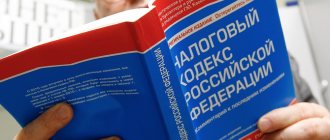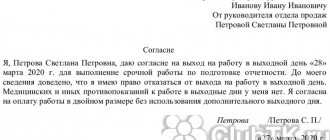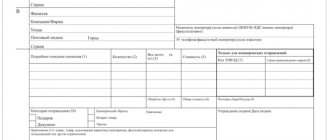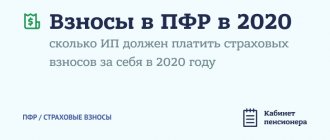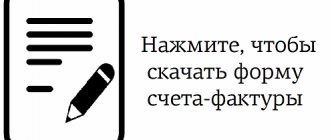According to statistics from tax authorities, VAT ranks second in terms of revenue. Any enterprise (or individual entrepreneur) using the general taxation system is required to transfer to the federal treasury a set percentage of the amount added to the original price of the goods by the seller.
In other words, when selling goods (products or services), the seller must pay the state the difference between the VAT received from buyers and the tax incoming from suppliers.
What are the VAT calculation schemes based on?
VAT, according to the norms established in tax legislation, is calculated on revenue received from the shipment of taxable items. In addition, amounts received into the company's accounts as a prepayment (advance) are subject to VAT. It is allowed to reduce the amount payable by the amount of the “input” tax indicated in the suppliers’ invoices.
The amount of VAT that will have to be paid to the state budget may change due to the use by taxpayers of such methods as:
- underestimation of sales volume;
- overestimation of deductions.
Both methods, if used incorrectly, are fraught not only with additional VAT charges, penalties and fines, but also with possible more serious sanctions. However, with the right approach, the taxpayer will calculate the correct tax amount while remaining within the tax laws.
How to reduce VAT payable: scheme
The desire to reduce the amount of tax is a completely natural desire. At the moment, among all types of taxes, VAT rightfully occupies the second place in size.
Everyone who uses the general tax system must pay it.
And although in this situation it is impossible to avoid paying it without punishment, there is a scheme to reduce the VAT payable in 2020, and it operates exclusively within the framework of the law.
Any purchase or sale is not carried out without VAT. It is an intermediate amount calculated on the markup that the entrepreneur uses to generate income.
According to established standards, tax must be calculated on the proceeds that were received in connection with the shipment of items eligible for taxation.
This tax is also calculated on other amounts of money received into the company’s account in the form of an advance. Optimizing VAT in 2017 can help reduce the accrued tax; there are two types of schemes.
The tax reduction process in both cases is carried out using the supplier invoice. In the first option, it is possible to reduce the sales value. Another is to exaggerate the size of deductions. The effectiveness of these methods will be achieved only if there is a competent approach to their use.
Any mistake can have serious consequences. In addition to additional VAT charges, penalties in the form of penalties and fines will follow. Moreover, if fraud is detected by the tax authorities, more serious measures may be taken. However, VAT can also be reduced by legal means.
Legal ways to reduce taxes
For those who work under OSNO, there are as many as 4 ways that make it possible to reduce taxes within the framework of the law. Thus, to reduce VAT, you can replace the purchase and sale transaction with an agency agreement. The next method consists of drawing up a document between the seller and the buyer, which is a commodity/money loan.
You can also reduce the amount of tax by receiving income in parts, that is, using the advance amount as a deposit. But if these methods are not very suitable, there is an opportunity to be exempt from paying VAT altogether. To do this, a person working for OSNO must submit an application for exemption to the tax office.
What is needed to get rid of taxes?
Despite the fact that VAT is one of the mandatory types of taxation, it is quite possible to obtain an exemption from its payment. To achieve what you want, you just need to meet a few conditions. First of all, it is worth knowing that monetary transactions carried out only on the Russian market can receive VAT exemption.
All types of goods sold must not be related to the excise category. In addition to these conditions, there is another important one, which is directly related to income. Only those whose income eligible for taxation for the quarter has not reached the limit of 2 million rubles can receive an exemption.
This amount of income should be considered excluding VAT.
If these criteria are met, the taxpayer can get rid of VAT for the entire calendar year. To do this, you must promptly submit an application for VAT exemption to the Federal Tax Service.
According to the law, those companies and entrepreneurs who have received tax exemption lose the obligation to accrue and pay it, as well as maintain the appropriate register.
Along with the VAT exemption, the taxpayer is additionally exempt from submitting a declaration to the tax authorities.
Of course, with tax exemption, there are also some restrictions on doing business. Thus, when VAT is abolished, a business entity is deprived of the opportunity to carry out tax deductions for this tax.
All input VAT amounts must be included in the unit of goods or services offered.
It is worth noting that if a payer exempt from VAT still issues tax invoices, then he will need to transfer tax amounts to the budget and timely submit declarations on them to the Federal Tax Service.
Substitution of contract
One of the common options used to reduce the amount of tax is to replace the standard agreement with an agency analogue. In this situation, the seller receives the status of an agent, which means that the tax base will need to be calculated based on the amount of the remuneration received, which is specified in the drawn up agreement.
When using this option, you should be careful when drafting the contract. In case of the slightest mistake, tax authorities will cleverly be able to re-qualify this document as a supply agreement. And here it will not be possible to get rid of penalties.
Source: https://saldovka.com/nalogi-yur-lits/optimizatsiya-nalogov/sposobyi-snizheniya-nds.html
Exemption from VAT obligations
Tax law allows a business entity to apply for exemption from this type of tax. To do this, several mandatory conditions must be met:
- Only transactions carried out on the Russian market are subject to exemption;
- goods should not fall under the category of excisable goods;
- the amount of taxable revenue during the quarter (three consecutive months) does not reach two million rubles. In this case, the amount of income is calculated without VAT.
If the taxpayer meets the specified parameters, then he can submit an application to the Federal Tax Service for a VAT exemption, which will be valid throughout the calendar year.
Under Article 145 of the Tax Code of the Russian Federation, a company or individual entrepreneur who has received a legal exemption will not have to charge and pay VAT, maintain relevant registers (sales book and purchase book), and submit tax returns to the regulatory authority. At the same time, the business entity will lose the right to tax deductions for VAT, and the amount of the “input” tax must be included in the price of a unit of goods/services.
Important: if a taxpayer exempt from VAT continues to issue invoices with the allocated tax, he is obliged to transfer these amounts to the state treasury and submit a VAT return to the Federal Tax Service.
The advantages of using this option are obvious, especially for small businesses. However, if among the buyer counterparties there are many organizations/individual entrepreneurs working with VAT, there is a possibility of losing business partners - it will not be economically profitable for them to work with Osvobozhdenie.
In addition, the beneficiary needs to monitor and regulate the receipt of income, because as soon as it “exceeds” 2 million rubles in 90 days (3 months) in a row, the right to exemption is automatically removed.
How to reduce VAT payable to the budget in 2020: diagram
Value added tax (hereinafter VAT) is an indirect tax that takes up a large part of the company’s expenses for OSNO.
Every practicing accountant is faced with the need to optimize VAT expenses and strives in every possible way to reduce payments for this tax.
In order not to violate tax laws, you should carefully study the procedure for calculating VAT and find out which methods of optimizing it are considered legal.
Tax effect in 2020
VAT is a federal tax that has not had any changes in the scheme and rates of payment to the budget for more than three years. The status speaks for itself. Those wishing to familiarize themselves with its purpose and formation formula should study Chapter 21 of the Tax Code of the Russian Federation.
Collections from the tax in question constitute a significant part of the state budget. For this reason, tax authorities pay special attention to issues of its control. VAT is levied on the sale of goods, services and work performed on the territory of the Russian Federation.
The financial burden of contributions to the budget falls on the end consumer. VAT is included in the final cost of the goods and is subject to reimbursement to the state.
The company selling the goods is essentially a tax collection agent. However, an entrepreneur, having received a certain amount in the form of gross income, does not want to part with part of it.
And is interested in reducing the tax amount.
Value added tax was invented in Germany in the early 19th century. And the French first introduced it only in the middle of the century, having previously tested it in an African colony. In the Russian Federation, this tax began to be applied only in 1992. Since then, the procedure for transferring VAT has undergone a number of changes and has acquired a large number of by-laws and departmental instructions.
The question of how to reduce VAT payable worries businessmen from different countries.
In 2020, the VAT rate on most goods in Russia remains at 18%. For certain categories of goods, VAT is 10%. This includes a range of medications, essential food products, products for children, and sales of scientific and educational literature.
VAT applies everywhere throughout the Russian Federation. Exported products are not subject to tax. A zero rate is also provided for the sale of high-tech goods in the space sector, transportation of energy resources, etc.
A complete list of conditions for applying 0% VAT is given in Article 164 of the Tax Code of the Russian Federation. And Article 165 provides that in each specific case the application of the zero rate requires documentary justification.
The legality of the zero rate must be confirmed periodically.
The value added tax in the Russian Federation is not the highest in the world. For comparison, VAT in Denmark and Sweden is 25%, in Uruguay - 23%, in Ukraine - 20%. But there is also Cyprus and Malta, where VAT is 15%.
Judging by the statements of our government, VAT rates will not fall in the near future
How an LLC can reduce VAT: working diagrams
The easiest way is not to pay tax at all. However, the days when this was done with the help of fictitious shell companies are over. Then everything happened extremely simply: a company was created, funds were transferred to the accounts of a shell company, and the fate of the company was decided .
Now, in accordance with the law, you are required to check the counterparty and request all its constituent documents. The activities of your company can be carried out over the last three years.
If the partner did not run a business, your expenses will be deducted and VAT will be charged on this amount. When tax violations are detected, 1 million rubles not paid on time, taking into account penalties and fines, easily turns into 2 million rubles.
In other words, the method of fictitious transactions no longer works. The only legal and completely legal method remains.
To make the transition from a general taxation system to a simplified one, in accordance with Art. 145 of the Tax Code of the Russian Federation, it is required to submit a written application to the tax authority and to comply with two conditions:
- The company's revenue for the last three consecutive months should not exceed 2 million rubles. (without VAT);
- the company should not be involved in the sale of excisable goods.
If these conditions are met, the company is exempt from paying VAT. This exemption will remain in effect for the next 12 months.
https://www.youtube.com/watch?v=NMVPsbw7K0M
Amounts of VAT previously accepted for deduction before the right to VAT exemption became available continue to be assigned to the company and are subject to restoration. In order not to create and then compensate the state for VAT debt, some financiers recommend that the enterprise undergo reorganization in the form of a spin-off.
In this case, the transfer of property is carried out in such a way that the assignee is not obliged to charge VAT (subclause 2, clause 3, article 39 of the Tax Code of the Russian Federation and subclause 1, clause 2, article 146 of the Tax Code of the Russian Federation).
Then an application for a simplified form of taxation is submitted. The reorganized organization is exempt from the need to restore VAT (clause 8 of Article 162.
1 of the Tax Code of the Russian Federation), and the new company will not do this, since it did not use the deduction (clause 3 of Article 170 of the Tax Code of the Russian Federation).
We are looking for the key to reducing value added tax in Russian legislation
This method is not suitable for those who actively cooperate with VAT paying companies. Because you will not be able to indicate VAT on invoices, but will put a stamp “Without tax (VAT)” (clause 5 of Article 168 of the Tax Code of the Russian Federation). Accordingly, the entire burden of VAT will fall on the partners. It is for this reason that many VAT paying companies are reluctant to cooperate with “simplified” companies.
The cost of the goods in this case should be less by the amount of VAT in order to remain competitive. Of course, if it is recommended to purchase goods from VAT payers, then for sales it is beneficial to cooperate with those who are exempt from tax. These are companies working for UTII, budget organizations: kindergartens, schools, territorial administrations.
Advantages of paying a single tax on imputed income
When working under UTII, a single tax is paid. The company is exempt from VAT. The UTII tax is calculated depending on the type of activity of the company and the retail space it occupies.
For household and veterinary services, the single tax is about 7,500 rubles, for those engaged in road transportation - 1,500 rubles, in retail trade - 1,800 rubles. etc. The actual income of the company is not taken into account.
Below is a short list of activities where UTII taxation is applicable:
- household services and veterinary services;
- car service and car wash;
- parking lots;
- cargo transportation;
- retail trade;
- catering services;
- advertising distribution;
- leasing of real estate and land;
- trading through machines.
How to reduce taxes using legal methods
There are completely legal ways to reduce or avoid paying VAT.
Tax benefits
Tax benefits are regulated by Art. 149 of the Tax Code of the Russian Federation. Such preferences can be roughly divided into benefits provided for certain goods (works or services), benefits for certain enterprises and entrepreneurs, and benefits for certain types of transactions.
Information about preferential transactions carried out by the company is indicated in the VAT return. If, in addition to preferential ones, the company also conducts other operations, accounting is maintained separately. If violations are detected in the area of preferential taxation, the fine is 20% of the unpaid tax amount (Article 122 of the Tax Code of the Russian Federation). The underpaid tax and penalties are added to this amount.
Photo gallery: list of preferential VAT categories
Tax incentives for VAT - part 1 Tax incentives for VAT - part 2 Tax incentives for VAT - part 3
Employment of disabled people
The next way to reduce the tax burden is based on obtaining benefits provided for enterprises employing the labor of disabled people (clause 2 and clause 3 of Article 149 of the Tax Code of the Russian Federation), enterprises at a number of specialized medical institutions and institutions for social protection and rehabilitation of the population.
Before you go for preferential taxation under VAT, you should think carefully. This step implies an increase in the volume of documentation and increases the chances of being subject to a more thorough audit by the tax service.
Reducing profits due to fictitious transactions
The concept of a fictitious transaction is simple. The entrepreneur shows inflated prices for the purchase of goods in his reporting.
This is achieved by creating a chain of resales through a network of artificial intermediaries. At the same time, the price of the product is constantly rising. With each transaction, the price of the product increases and the tax amount decreases.
But too many counterparties increase the cost of securing a transaction.
The company may enter into a fictitious contract for the provision of services . In this case, the work is carried out by the company itself and the costs do not leave the company. These schemes are well known to tax authorities and are systematically monitored.
In their activities to suppress fraud with fictitious transactions, the tax authorities of Ukraine, for example, are guided by the State Tax Administration Order No. 266, which approved “Methodological recommendations for conducting audits of VAT tax returns by counterparties.” This order describes in detail the signs of fictitiousness when carrying out transactions, which allows tax authorities to suppress offenses on the part of firms and companies according to this scheme.
The essence of fictitious transactions is banal money laundering
Sometimes a counterparty company issues a loan that is not subject to VAT. And subsequently, by the novation agreement, this amount is transferred into payment for the goods. Sometimes a large and expensive batch of goods is sold in one tax period.
The seller, by prior agreement, deliberately underestimates the cost of the goods, while simultaneously providing a deferred payment. Interest on payment is equal to the discount amount. As a result, revenue from the sale of goods is artificially reduced, and, consequently, the tax component of VAT.
Manipulations with commercial loans are carried out similarly. Interest on the loan should not be associated with payment for goods and not included in VAT (reference to subclause 3 of clause 3 of Article 149 of the Tax Code of the Russian Federation).
Another frequent case is when transactions with goods are carried out “in load”. When selling main goods subject to a VAT rate of 18%, a minimum markup is established.
At the same time, another product, subject to a 10% tax, is sold to the same counterparty at a maximum markup. The result is easy to calculate. In addition to a significant reduction in the tax paid, the company faces a fine.
If, of course, law enforcement agencies manage to prove the deliberate concealment of part of the VAT.
Accounting and VAT refund
As soon as a transaction for the purchase of goods is completed, an accounting document appears - an invoice with a highlighted VAT line. This amount is entered into account 19 - VAT accounting. After selling the goods, the accountant sends VAT on the purchased goods from the credit account. 19 to the debit of the account. 68. The difference is the amount of VAT payable.
Amounts not accepted for deduction should not reduce the amount of VAT deductible, so they can be written off to the account. 91.2 as expenses not accepted for tax purposes.
The document “Certificate of Completion of Work” is also required.
In practice, accountants use online VAT calculators to make arithmetic calculations, which allow you to accurately and quickly calculate the VAT value for each individual transaction.
Form of main and adjustment
Source: https://sb-advice.com/nalogi/4034-kak-umenshit-nds.html
Supply agreement vs agency agreement
A common option for calculating the minimum VAT can be considered the replacement of a standard contract for the supply of goods with an agency contract. As soon as the seller becomes an agent, the tax base will be calculated not from the sales amount, but from the amount of remuneration specified in the contract.
Remember: to prevent tax inspectors from reclassifying an agency agreement into a supply agreement and, accordingly, imposing significant penalties, special attention should be paid to the proper execution of documents attached to the agency agreement.
This scheme is most relevant if the partner (supplier) works according to the simplified tax system or another taxation method that does not provide for the allocation of VAT in invoices. Using an agency agreement, the supplier, called the principal, instructs the buyer (agent) to purchase and further sell a certain
batch of goods. For this service, the principal will be obliged to pay the agent a premium, which will become the object of VAT taxation.
To avoid tax complications, you need to protect yourself with the following documents:
- an order to the agent from the principal with a precise indication of the task for the purchase/sale of goods or provision of services;
- agent's report with attached papers confirming high-quality performance and expenses incurred;
- invoices for the purchase of entrusted goods and their shipment;
- documents for payment;
- other papers with a link to a specific agency agreement.
Keep in mind: if the agent’s actual expenses reimbursed by the principal exceeded the amount of remuneration, then they must be included in the VAT tax base.
Requalification of advance payment
Advances received from the buyer must be subject to VAT. As soon as the amount of the advance payment is “covered” by the shipment of the goods, the tax amount will be adjusted. If you draw up appropriate agreements with the buyer, this payment to the budget will not be necessary.
Cash loan
The scheme for replacing an advance with a cash loan is as follows:
- an agreement is drawn up to provide a loan in an amount commensurate with the cost of the upcoming delivery;
- the money goes to the supplier and is not subject to VAT;
- goods are shipped or services are provided under a supply/service agreement;
- an act of mutual offset is approved, in which the parties stipulate the repayment of the loan provided at the expense of the supplied goods/services.
It is important to know : when replacing an advance with a cash loan, it is necessary to observe certain discrepancies in the amount of the contract, the timing of the loan transfer and the shipment of goods. If all operations are carried out within 1-2 days, there is a high probability of claims from the Federal Tax Service.
The loan agreement should not contain terms that give tax authorities the right to charge additional VAT and significant penalties. In addition, it is important to stipulate in the contract the purpose for which the supplier receives a loan from the buyer.
Agreement on deposit
This type of prepayment modification is relevant for manufacturing or construction companies that may receive advances from a potential buyer for the purchase of materials or raw materials. If an agreement on a deposit appears as an annex to the main contract, then there is no talk of charging VAT on this amount.
In this case, it is important to observe the correct wording in the payment order - it is necessary to indicate both the number/date of the main contract and the details of the additional agreement on the deposit.
Advance on a bill
This method of influencing the amount of VAT is not used very often, but, nevertheless, it is completely legal and practically devoid of pitfalls. The method for applying a bill advance is as follows:
- the supplier issues its own bill of exchange and transfers it to the future buyer by deed;
- in payment of the bill, the buyer must transfer the specified amount to the account of the drawer, and such cash receipt will not be perceived by the tax authorities as an advance;
- after the goods have been shipped, the parties must document the offset of mutual claims with an appropriate act.
You need to know: the “bill” scheme is used in cases where the specific delivery amount is known in advance, and in the act of transfer of the bill of exchange it is necessary to indicate all its details (number, date, amount).
VAT rates for air carriers have been adjusted
Transactions that are subject to VAT at a rate of 0% include services for domestic air transportation of passengers and baggage, provided that the point of departure or destination is located in the Kaliningrad region. To confirm the zero rate and deductions, the taxpayer must submit a register of transportation documents to the tax authority. Such changes were made by paragraphs 1 and 2 of Article 1 of the Federal Law of November 27, 2017 No. 353-FZ. They are valid from 01/01/2018
and apply to services provided after this date.
In addition, until 12/31/2020
the application of the 10% VAT rate to domestic air transportation of passengers and baggage has been extended, except for flights to Crimea and Sevastopol (clause 6, clause 2, article 164 of the Tax Code of the Russian Federation). This change was introduced by Article 4 of Law No. 335-FZ.
Corrective VAT return
Situations often arise when, at the end of the quarter, significant amounts of prepayment are received into the VAT payer’s account, from which tax must be paid. It is not economically profitable to withdraw a lot of money from circulation and wait three months until the VAT paid can be claimed as a deduction.
If, based on the advance payment received, shipment is expected in the near future, then it is quite possible not to include the amount of the advance payment in the declaration, but to calculate the tax without taking it into account. As soon as the goods are shipped/sold in the new quarter, the accounting department should draw up an adjusting declaration and send it along with the report for the next quarter.
Before sending both declarations (updated and current), you need to calculate the amount of penalties for late paid tax and transfer it to the budget. Since the amount of the penalty will be small, the taxpayer will thus be able to save a significant amount of money.
Separate VAT accounting is required, even if the 5% rule is observed.
If a taxpayer carries out both taxable and non-taxable activities, he is obliged to keep separate records of business operations and VAT amounts (paragraph 5, clause 4, article 170 of the Tax Code of the Russian Federation). However, there is an exception to this rule - the 5% rule. It provides that if the share of total expenses for the acquisition, production and sale of goods (work, services) that are not subject to VAT does not exceed 5% of the total amount of such expenses for the quarter, the taxpayer may not keep separate records and deduct the entire amount “input” VAT (paragraph 7, clause 4, article 170 of the Tax Code of the Russian Federation).
| 1C:ITS For more information about separate accounting of input VAT, see the “Value Added Tax” reference book in the “Taxes and Contributions” section. |
In practice, this rule gave rise to controversy: can the 5% rule be applied to goods used only in activities that are not subject to VAT? The regulatory authorities and courts objected to this (see paragraph 12 of the letter of the Federal Tax Service of Russia dated December 23, 2016 No. SA-4-7 / [email protected] ).
From 01/01/2018
This approach is enshrined in law. Now the 5% rule applies only to those goods (works, services) that are used simultaneously in both VAT-taxable and non-taxable transactions.
In addition, from this date, all taxpayers who carry out both taxable and non-taxable transactions must maintain separate accounting. There are no exceptions for those who follow the 5% rule. Such changes are enshrined in subparagraph “d” of paragraph 12 of Article 2 of Law No. 335-FZ.
What not to do when calculating the VAT amount
When considering a particular method of influencing the amount of taxes, it is necessary to carefully follow the regulations for drawing up supporting documents. We must remember that
Fiscal authorities thoroughly know all tax evasion schemes, so only correct legal and accounting documents can protect the taxpayer from claims of the Federal Tax Service.
It is strictly not recommended to use semi-legal fly-by-night companies to obtain a VAT deduction or to underestimate the amount of revenue received. Such actions are easily detected, and the punishment for VAT evasion can far exceed the amount of savings.
Documents for zero VAT on parcels abroad
When exporting goods by mail, the zero VAT rate from 2018 allows the new law to be confirmed by payments (originals or copies) and a declaration in the CN 23 form:
In addition to payments, you can choose what to submit from 2 options (new sub-clause 7, clause 1, article 165 of the Tax Code of the Russian Federation):
- original or copy of the CN 23 declaration (with Russian customs marks);
- original or copy of the customs declaration (with Russian customs marks) and original or copy of the CN 23 declaration.
The point is that for 2020, a separate list of supporting documents for international postal parcels was not clearly stated in the Tax Code of the Russian Federation.
Positive changes in VAT in 2020 for legal entities are that when sending postal parcels abroad, a foreign trade contract is not needed to confirm 0% VAT (changes were made by Law No. 350-FZ).
Let us remind you that export VAT must be justified 180 calendar days after the start of this customs procedure. The documents are submitted along with the declaration for this tax.


